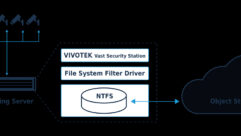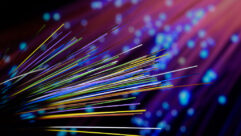Surveillance Users Rely on Fiber
May 24, 2006 5:24 PM
Once upon a time, video surveillance meant a security guard sitting in front of a set of television monitors. If the guard was awake, the security system was functional.
Even functioning perfectly, the system had its problems. Video images were in grainy black and white, and captured only every few seconds. Nothing happened on screen for hours at a time, and when it did happen, it could easily be missed. When security officials needed to review an event, they had to move tediously through hours of tape.
That whole picture is changing rapidly today.
ARNnet, the Australia-based IT newsletter publisher, noted recently that the move from analog to digital “is heating up the security surveillance and monitoring market.” Makers of traditional closed-circuit television systems are increasingly challenged to deliver more functionality and integrate more closely with other components of a user’s IT network.
Increased video surveillance functionality today means full-motion video, captured continuously in realtime and often in high definition. The datastream moving through the network also includes information about the video. Increasingly, software is being built into video surveillance cameras that enables the camera itself to analyze the images it is capturing, detect events from intrusions to chemical spills, and alert analysts in the central control room.
The growing volume and complexity of the data being handled by surveillance systems today is one reason for fiber’s prominence and bright market outlook.
Fiber stands to hold its own and expand, despite the fact that many video surveillance users are adopting IP solutions for their needs. Fred Scott, vice president of broadcast and pro AV fiber products at GE, says “It’s fair to say there is a place for both (fiber and IP) in the world,” but adds that dedicated fiber-optic networks have significant advantages in many application settings.
One advantage is quality, Scott says. “Any time you send a signal through a fiber-optic path, at the destination you end up with the exact same image you started with,” he explains.
Another asset of fiber cited by GE is its throughput. “Today’s high-performance surveillance systems simply need to get more signals from the camera end to the monitor end, over greater distances, and in harsher environments,” the company says. “A fiber-optic transmission system uniquely preserves the quality of video signals and provides a high level of security. Fiber optics transmit at higher bandwidths and with lower losses, and operate at distances five times greater than coaxial cable.”
GE says fiber can accommodate transmissions over four miles and more without repeaters or amplifiers, which makes it a good choice for college campuses, corporate facilities, warehousing and distribution centers, bus and train stations, and similar venues.
The geographical limitations of fiber—”You have to have a piece of glass connected to every point,” Scott says—actually turn into an advantage from the standpoint of security. Information moving through a fiber network can’t be hijacked by anyone without physically accessing the fiber cables themselves.
ARNnet comments that more and more potential users are coming to see good video surveillance as more than just a hedge against malicious intrusions and other attacks, but as a means of protecting all kinds of corporate assets. Ever-smarter systems, delivering more actionable video in a more timely way, are driving the surveillance business into the future.
Fiber stands to benefit from this momentum.









